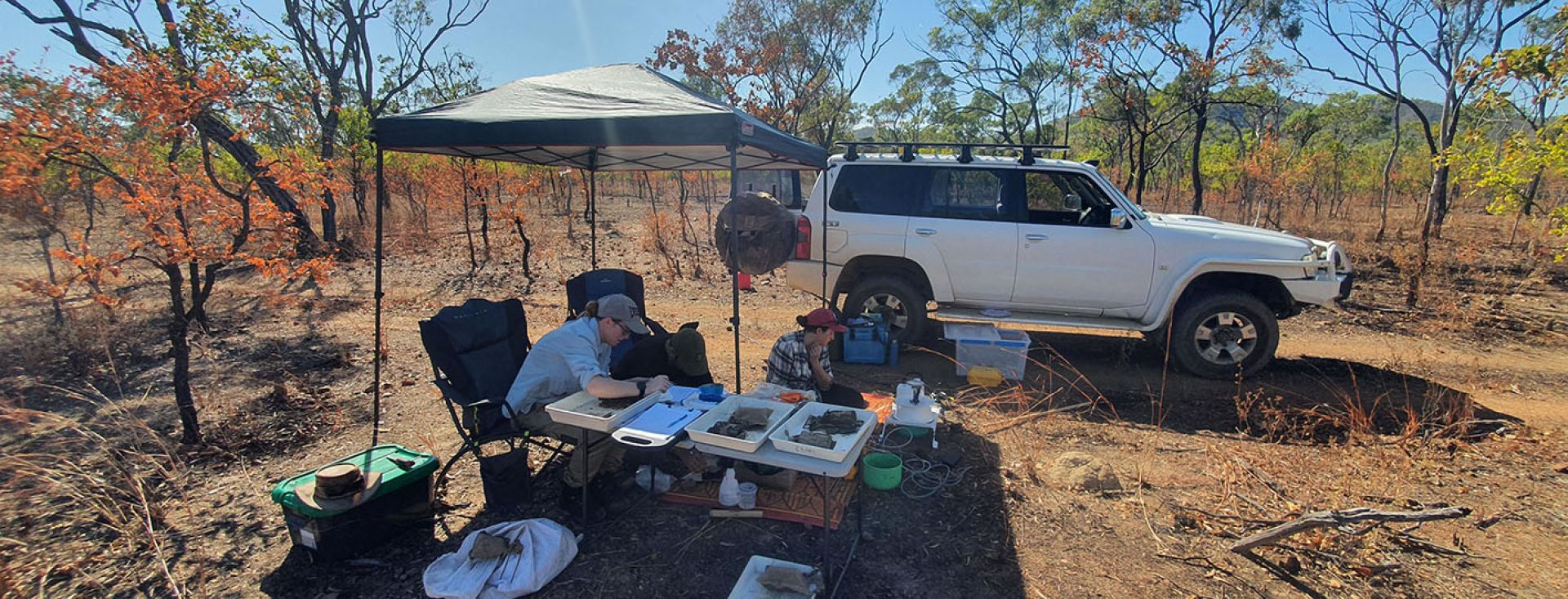Media Releases
Termites – busier as the planet warms

As global temperatures rise Australia’s termites are likely to expand their territory south, beyond the tropics, and increase their role in wood decay, according to research published today in the journal Science.
A team of Far North Queensland scientists worked in coordination with colleagues from across the country and around the globe to investigate the role that microbes and termites play in recycling the carbon found in deadwood back to the atmosphere.
Researchers from James Cook University (JCU), TERN Ecosystem Processes, and the School for Field Studies at Danbulla were part of the world-wide study.
University of Miami tropical biologist Professor Amy Zanne led the international investigation in which more than 100 scientists from 88 research institutions applied the same techniques at 133 sites across six continents and most of the world’s bioregions.
Professor Zanne said that while microbes’ role in wood decay was recognised as globally important, the part of termites has been largely ignored.
“This means we are not accounting for the massive effect these insects could pose for future carbon cycling and interactions with climate change,” she said.
“Termites are a critical feature of our tropical forests and savannahs here in far northern Queensland, so we were keen to be involved,” JCU Associate Professor Lucas Cernusak said.
“Understanding how carbon is cycled between forests and the atmosphere is key to predicting how natural systems might react in the near future.”
To investigate the changing role of termites, scientists around the world set put wooden baits in termite habitat.
To distinguish between the impacts of termite activity and microbial decay, all the baits were wrapped in mesh fine enough to exclude termites, but half then had holes cut into the mesh to allow termites to enter.
On the Atherton Tablelands, Dr Mirko Karan cut more than 400 linear metres of pine timber into around 2400 baits, for distribution to 12 TERN Ecosystem Process sites across the range of biomes found in Australia.
“Who carries out the work of decomposition – microbes or termites – is an important factor because the results are dramatically different,” Dr Karan said.
“Microbes recycle the carbon to the soil and from there it ultimately becomes CO2 in the atmosphere. But when termites recycle carbon, they produce both CO2 and methane, and methane is up to 25 times more potent than CO2 as a greenhouse gas.”
The researchers, assisted by volunteers, tracked the rate of deadwood decay by inspecting the baits and collecting subsamples during the two years of the experiment.
They found that at higher temperatures termites were more likely to discover the baits, and played a more significant role in breaking down deadwood.
“Faster decay of deadwood means faster release of carbon back to the atmosphere, with a smaller pool of carbon held as deadwood in the landscape. And increased termite activity may also mean more of that carbon is released as methane,” JCU Research Fellow Dr Alexander Cheesman said.
“The next stage for this line of research is to trace how that carbon passes through termite mounds and the soil and is recycled back to the atmosphere.”
The study included modelling of the areas likely to see an expansion of termite activity by the 2050s.
“Termite decay was greatest in tropical seasonal forests, tropical savannahs and sub-tropical deserts,” JCU Senior Research Fellow Dr Jamie Cleverly said.
“But there’s a broad range of forested landscapes in Australia where you won’t currently find termites as a major factor in wood decomposition.
“Although there are local factors to consider, our initial results suggest we’ll see termites extending their range beyond the tropics in the near future.
Do the study’s results signal a greater threat from termites to buildings?
“Out of more than 300 species of termite found in Australia, only a few species are of real concern to our homes,” JCU Associate Professor Michael Liddell said.
“Translating results from the natural environment to the built environment is difficult.
“We are no doubt going to see species migration as the climate change. That could include other termite species like the highly destructive Giant Termite (Mastotermes darwinensis), which is currently limited to tropical Australia, moving south.”
The study ‘Termites sensitivity to temperature affects global wood decay rates’ is published in the September 23 edition of Science.
Media enquiries: linden.woodward@jcu.edu.au